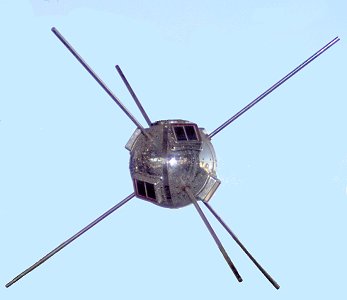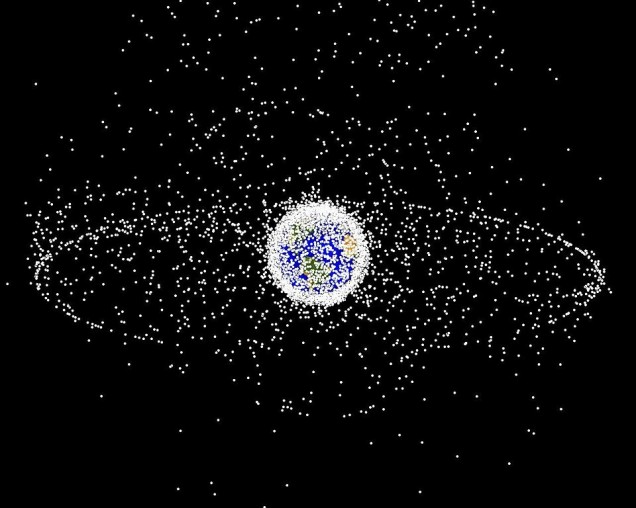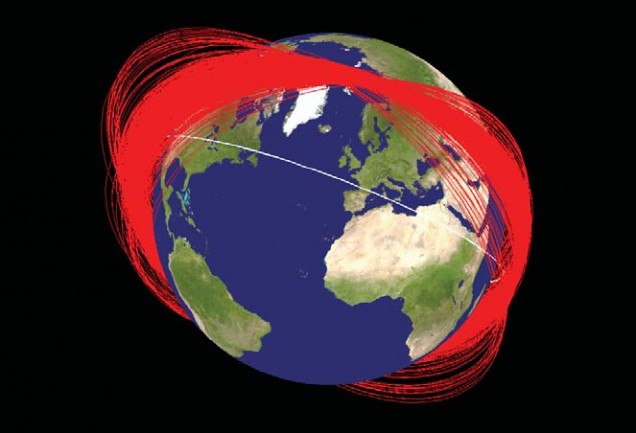Tagged: Satellites
Space Debris: A Universal Problem
Many of the objects surrounding Earth are just man-made waste.
At this very moment, over several million useless pieces of “space junk” orbit our planet, presenting an alarming concern for not only the Unites States, but nearly every country on Earth. Technology is innately tied to space; with the growth of cell phones, GPS systems, and satellite television and radio, consumers understand their modern life requires functioning satellites. However, nonfunctioning satellites and their fragments, which have been left orbiting our planet for decades, pose a grave risk to the space technology that supports our current way of life. Primarily, we face three challenges that must be dealt with. First, we must take measures to reduce debris left in space from now on. Second, we should ensure we do not compromise our national security interests in space. Finally, debris left by past space missions must be removed in order to prevent collisions with current and future space endeavors.
A Call to Action
Each of these challenges requires a combination of technical ingenuity, international cooperation, and financial commitment from multiple nations. The alternative is failure, which is grave for everyone. Every new piece of debris in space increases the potential of “Kessler Syndrome,” which arises when collisions between fragments of space debris and larger satellites create exponentially higher amounts of space debris. Kessler Syndrome could leave our satellite networks and space exploration programs useless for decades. For example, China’s destruction of their own nonfunctioning satellite in 2007 yielded more than 3,000 pieces of shrapnel, which have since endangered both the International Space Station and the space shuttle Atlantis. 1,2 This single action effectively undid nearly all the progress made to reduce space debris for the last few decades.
Following China’s actions in 2007, the international community has made progress in defining some standards on space debris, although there is still substantial room for improvement. The Orbital Debris Program Office within NASA has worked on guidelines to reduce space debris. NASA and the Department of Defense have also been working together to track some of the 500 million pieces of space debris orbiting Earth.3 These efforts will be expanded as part of NASA’s 2013 budget proposal to shift funding toward “orbital debris and counterfeit parts tracking and reporting programs;” the Department of Defense is beginning contract bids with aerospace and software companies (like Lockheed Martin and Raytheon) over new “Space Fence” software to track orbiting particles.4,5
Satellites also must be able to switch from the popular Low Earth Orbit (LEO) zone to a “graveyard” orbit when they are no longer operational. This requirement helps prevent older satellites from becoming inadvertent hazards; which is precisely what happened in 2009 when a defunct Russian satellite collided with a US communications satellite over Siberia.6 But while US measures to prevent debris have helped stop US satellites from becoming destructive, about 2/3 of the debris in space comes from non-US launches. Therefore, a domestic approach to this issue is not enough; we must work on international agreements to reduce space debris.
Going Global
Some efforts have already been made in this field. The Inter-Agency Space Debris Coordination Committee (IADC) and the United Nations Committee on the Peaceful Uses of Outer Space (COPUOS) have given a forum for many of the great space-faring nations (Including the US, Russia, and China) to discuss the issues surrounding space debris. Now, the European Union has published an International Code of Conduct for Outer Space Activities. This code serves as a framework for multilateral negotiations to begin. However, the United States has some concerns with potential security risks.
Many of the efforts within the code relate to preventing incidents like the 2007 Chinese satellite destruction. In doing so, the code also prevents states from pursuing militarization of space, which has led to domestic concerns in the US. the intentional destruction of enemy satellites could jumpstart Kessler Syndrome and create a cloud of debris around the Earth. Yet concerns have been repeatedly raised against the international code. Many fear the code is “disarmament of space” in disguise.
Concerns for the Future
The United States Secretary of State has responded to these claims by emphasizing how the proposed agreement would not be legally binding. Since the agreement would not have the rule of law, it would technically not be a treaty. Therefore, Senate approval is not necessary. Regardless, it is clear any international agreements would surely need to tread lightly on the topic of national security. After all, if the United States is having security concerns with the wording of the agreement, we can surely expect other military powers, like China, to raise objections. However, the code’s provisions are consistent with all existing practices of the National Aeronautics and Space Administration, Pentagon, and State Department.6

The Vanguard 1 satellite, defunct since 1964, will remain in orbit for 240 years. Credit | NASA via Wikimedia Commons.
However, such international agreements, aimed at reducing space debris and allowing each nation the right of protection in space are still controversial and will take time to reach an agreement. While the idea of removing debris is an undeniably positive ambition, the primary opponent to this movement is monetary. None of the existing ideas for removing space junk is cost effective, but new ideas lend hope for a more cost friendly solution. Ideas like electro-dynamic tethers, which pull satellites into their inevitable destruction in Earth’s atmosphere, and nanosatellites, which throw nets over debris and pull them into the atmosphere, have the potential to reduce the amount of debris in our atmosphere while still being cost effective, but they are far from deployment.7
Allowing NASA to have the resources required to battle this epidemic is a key way to advance these ideas. The Obama administration has highlighted the importance of these measures in their national space policy.8 NASA has specifically created a budget for researching and tracking space debris, despite having their overall budget reduced from 4.4% of the total federal budget (in 1966) to less than 0.5%.9 By allocating funding to this specific field, we can begin taking steps to prevent space debris from destroying our modern way of life.
An Optimistic Outlook
Space debris is a problem that has only grown worse over time, with every collision in space creating hundreds of thousands of new potential disasters. Through international cooperation, domestic understanding, and technological investment we can solve this problem. We can begin by highlighting the importance of this issue and not allowing it to escape the public eye. Our dependence on space is something we often take for granted, but it hangs precariously on the edge of disaster if we do not answer this challenge. However, we will choose to answer the challenge, not because it is easy, but because it is hard.
References
1 Malik, T. (2012, 01 29). Iss dodges space debris from Chinese satellite. Huffington Post. Retrieved from http://www.huffingtonpost.com/2012/01/30/iss-dodges-debris-from-de_n_1241167.html
2 Schwartz, E. I. (2010, 05 24). The looming space junk crisis: It’s time to take out the trash. WIRED Magazine, Retrieved from http://www.wired.com/magazine/2010/05/ff_space_junk/all/1
3 NASA Orbital Debris Program Office. (2012, 03). orbital debris frequently asked questions. Retrieved from http://orbitaldebris.jsc.nasa.gov/faqs.html
4 National Aeronautics and Space Administration, (2012).Fy2013 president’s budget request summary. Retrieved from website: http://www.nasa.gov/pdf/659660main_NASA_FY13_Budget_Estimates-508-rev.pdf
5 Staff. (2012, 03 13). New debris-tracking ‘space fence’ passes key test. CBS News. Retrieved from http://www.cbsnews.com/8301-205_162-57396451/new-debris-tracking-space-fence-passes-key-test/
6 Broad, W. J. (2009, 02 11). Debris spews into space after satellites collide. The New York Times. Retrieved from http://www.nytimes.com/2009/02/12/science/space/12satellite.html
7 Zenko, M. (2011). A code of conduct for outer space – policy innovation memorandum no. 10. Council on Foreign Relations, Retrieved from http://www.cfr.org/space/code-conduct-outer-space/p26556
8Office of the President of the United States, (2010). National space policy of the united states of America. Retrieved from website: http://www.whitehouse.gov/sites/default/files/national_space_policy_6-28-10.pdf
9 Rogers, S. (2010, 02 01). NASA budgets: Us spending on space travel since 1958 updated. The Guardian. Retrieved from http://www.guardian.co.uk/news/datablog/2010/feb/01/nasa-budgets-us-spending-space-travel


